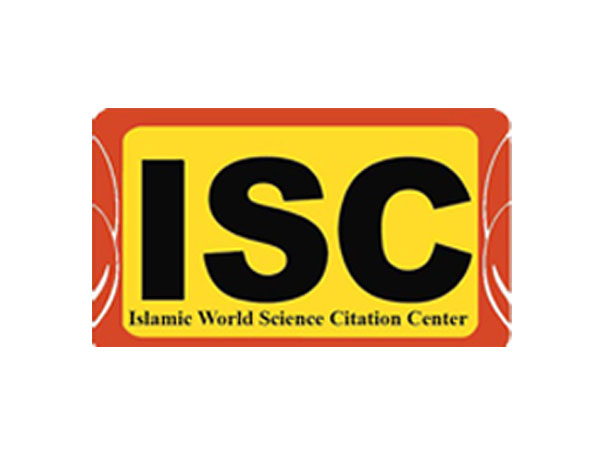About the journal
![]() aims to contribute to the literature by publishing manuscripts of the highest scientific quality across all fields of "Nutrition", "Diet therapy", "Food Science", and related interdisciplinary sciences. It publishes short communications, original research articles, reviews, systematic reviews, and meta-analyses, all prepared in accordance with ethical guidelines. The target audience includes specialists and professionals who work in or are interested in all disciplines of food science and nutrition as they relate to health.
aims to contribute to the literature by publishing manuscripts of the highest scientific quality across all fields of "Nutrition", "Diet therapy", "Food Science", and related interdisciplinary sciences. It publishes short communications, original research articles, reviews, systematic reviews, and meta-analyses, all prepared in accordance with ethical guidelines. The target audience includes specialists and professionals who work in or are interested in all disciplines of food science and nutrition as they relate to health.
مجله Food and Health دارای رتبه علمی-پژوهشی از وزارت بهداشت، درمان و آموزش پزشکی می باشد.
“Food and Health” Journal is Officially Licensed and Certified by
Ministry of Health & Medical Education
1) To pay the refereeing fees for your articles 150,000 tomans, please proceed to the following link:
https://srb.iau.ir/pazhooheshi/fa/form/864.
2) To cover the costs of acceptance and publication, after the final approval by the journal, you may proceed with the payment of 350,000 tomans, as the article publication fee via the following link:
https://srb.iau.ir/pazhooheshi/fa/form/866.
After completing the payment, kindly send a snapshot of the deposit confirmation page, along with the article files in the mandatory "attached file" section. Use this section only for submitting the payment receipts, not for uploading images, tables or any other items related to the manuscript.
Alternatively, you may send the receipt, along with the manuscript code and authors' information, to the journal’s official email address at fh.srbiau@gmail.com. Please note that the only official way to contact the journal regarding your manuscripts is through our email address.
-
Open Access Article
1 - Effect of Adding Pomeogrant Peel Essential Oil on the Microbiological, Antioxidant and Sensory Properties of Toast Bread
Issue 2 , Vol. 8 , Spring 2025 -
Open Access Article
2 - An Overview of the Biological Effects of Kefir: An Amazing Beverage
Issue 2 , Vol. 8 , Spring 2025 -
Open Access Article
3 - Effect of Borage Oil Supplementation on Skin Health: A Systematic Review of Randomized Control Trials
Issue 2 , Vol. 8 , Spring 2025
-
Open Access Article
1 - The Relationship between Mental Health Indicators and Anthropometric Profile among non-Iranian Students of the Science and Research Branch of Islamic Azad University
Elnaz Zirak Sharkesh ، Paniz Ahmadi ، Niloofar Bayat ، Mahsa Aghaei ، Mahdieh Roshan ، Haniyeh Memarian ، Mojtaba Abdipoor ، Amirfaham Rezaee ، Samira Movahed ، Mohammad Mahdi Hajinasab ، Behnood Abbasi *Issue 4 , Vol. 7 , Autumn 2024 -
Open Access Article
2 - Genetically modified foods: Pros and cons for human health
Fatemeh Karami * ، Peyman Mahasti ShotorbaniIssue 2 , Vol. 1 , Spring 2018 -
Open Access Article
3 - Optimization of Ultrasound-Assisted Extraction Conditions for Pigment Compounds of the Brown Algae Sargassum angustifolium Using Response Surface Methodology
Niloofar Aghajanpoor Sourkohi ، Aria Babakhani *Issue 3 , Vol. 6 , Summer 2023 -
Open Access Article
4 - Evaluation of the Acute Oral Toxicity of a Crocus sativus (Iranian Saffron) Nanoemulsion in Rats
Seyed Amir Ali Anvar ، Hamed Ahari * ، Sara Allahyaribeik ، Sonia Shojagharehbagh ، Sima MoradiIssue 3 , Vol. 6 , Summer 2023 -
Open Access Article
5 - Type 2 ِDiabetes as a Prominent Global Health Issue: a Narrative Review
Asal Ansaripour ، Behnood Abbasi *Issue 1 , Vol. 5 , Winter 2022 -
Open Access Article
6 - A Review of Plant Extracts and Essential Oils as Bio-based Additives in Biodegradable Polymer Coatings for Food Packaging
Marjan Nouri *Issue 3 , Vol. 6 , Summer 2023 -
Open Access Article
7 - The effects of hydration status on cardiovascular system: a review
Shahnaz Shekarforoush * ، Mina FardaeeIssue 2 , Vol. 3 , Spring 2020 -
Open Access Article
8 - Performance of machine learning system to prediction of almond physical properties
Mohsen Mokhtarian * ، Hamid Tavakolipour ، Hassan Hamedi ، Amir Daraei GarmakhanyIssue 4 , Vol. 3 , Autumn 2020 -
Open Access Article
9 - Characterization of yogurt prepared with kombucha starter culture as inoculum
Mahsa Makvandi ، Vajiheh Fadaei * ، Kianoush Khosravi-DaraniIssue 4 , Vol. 4 , Autumn 2021 -
Open Access Article
10 - The association of dietary acid load with metabolic syndrome: A cross-sectional study
Pegah Rahbarinejad ، Ariyo Movahedi *Issue 1 , Vol. 3 , Winter 2020





